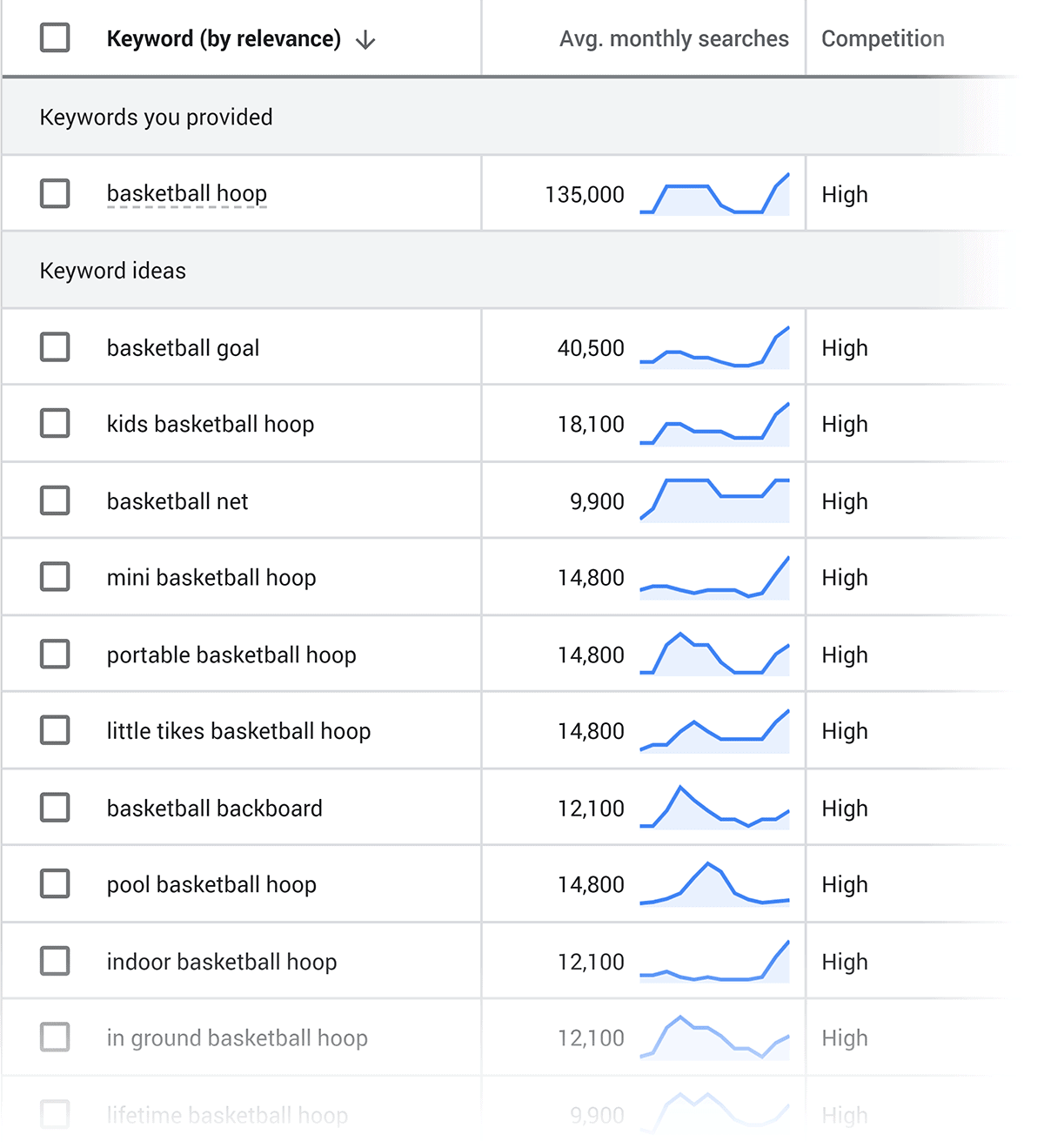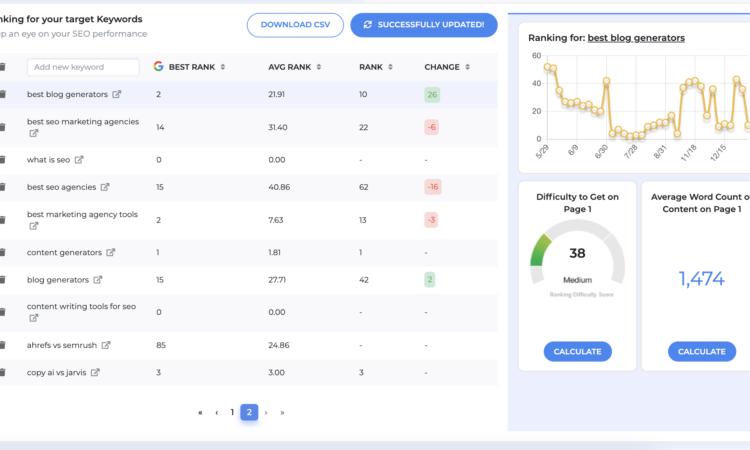- How to Boost Local SEO and Attract Nearby Customers with Podcasts - December 13, 2023
Ended soon
Record a podcast, edit the audio, post it online, and it’ll start driving listeners. A few years ago, it would be this simple. Today, there are over five million podcasts with 70+ million episodes, so the story is a little different.
But it’s not all bad news.
Podcasts are one of the most influential platforms to market your business and situate yourself as the industry leader. For example, in a survey of 3,00,0000 podcast listeners, 63% bought the product promoted by the show host—it’s an insanely high conversion rate!
No wonder businesses want to join the race and reap maximum benefits in the form of higher local SEO ranking and new customers. In this article, we’ll show you how you can achieve just that.
But first, let’s begin with understanding how podcasting relates to local SEO.
Table of Contents
An Introduction to Local SEO and Podcasting
As with regular SEO, local SEO is a way to optimize your website, content, and, in this case, podcasts for search engines. It targets particular geographical locations to attract local customers and drive foot traffic to your services or store.
By optimizing your show for local SEO, you’ll rank higher when prospects are searching for the topics you talk about and the services/products you offer.
For local ranking, search engine giants consider a few crucial factors, including:
- Google My Business profile: Proximity, categories, keywords, etc
- Reviews: First and third-party reviews, review quality and velocity, etc
- On-page signals: Keyword in title tag, domain authority, presence of NAP, etc
- Citation: Location, citation volume, NAP consistency, etc
- Behavioral information: Click-through rate, mobile clicks to call, listen time, downloads, etc.
Google also considers distance, relevance, and your overall web presence, especially content. And that’s where podcasts come in.
Podcasting is no longer just an entertaining audio that people play in the background while running errands. Today, consumers are turning to podcasts to learn about new topics.
According to research by Oxford University and the Reuters Institute of Study, over 50% of podcast listeners in the UK tune in to podcasts to learn something.
This trend toward learning makes podcasts a valuable channel for businesses to share their expertise and attract customers. When coupled with a local SEO strategy, your podcast can become one of the most powerful elements of your content marketing funnel.
8 Tips to Optimize Your Podcast for Local SEO
A few years ago, Google started surfacing podcast content in search results. For example, a search for ‘Fitness podcast’ populates a list of relevant shows. But coming up on the top of these search results, especially in a local where your ideal customers reside, isn’t easy.
You have to convince Google that you are one of the top providers people can turn to for answers. A sure-shot way to do this is to optimize your podcast for local SEO.
Here are eight tips to get you started:
Plan Your Podcast around Local Keywords
With the majority of people discovering podcasts through search engines (Google, Bing), keywords are at the heart of SEO. Knowing what your prospective listeners are searching for, how exactly they phrase their query, and how often they make that search makes the bedrock of a successful local SEO strategy for podcasts.
Start with keyword research. Using tech like Growth Bar’s keyword research tool, see what topics people in your area are searching for that are relevant to your business. List the top searched keywords and make them the center of your episode.
For example, if you are a home improvement business in Texas, you’ll want to target keywords like “Texas home improvement podcast’ instead of just ‘home improvement.’
Write podcast titles and meta descriptions around these keywords. It’ll help Google identify your podcast’s context while indexing—giving you higher ranking opportunities.
Be careful, though: because these are keywords that many other businesses may want to target, it’s important to stay original with your content. So, make sure you check out your competitors’ content, because sometimes it’s necessary to rewrite text to avoid plagiarism.
Structuring a Local-SEO-Friendly Episode
You’ve chosen your primary local keyword—Texas home improvement podcast. But you can’t use the same keyword in every episode, as it can cannibalize your own ranking and success.
In your initial research, create a list of popular keywords with high search volume and low competition. Yet better, aim for long-tail keywords, like “How does home improvement loan work in Texas.”
Google and tools like Answer the Public are great places to find inspiration for these long-tail keywords. Using them, you can find out the questions people have about specific topics.
Caption: Answer the Public result for Texas home improvement
Couple these keywords with your personal experience. For example, what are your customers’ most frequent questions? What are the common misconceptions in the industry? What area-specific issues does your business solve?
This research will form the skeleton of your podcast episodes—talking points that answer your audience’s burning queries. The result—quality, customer-attracting podcast that ranks on the top SERPs locally.
Optimize Your Podcast for Different Platforms
A 2022 Edison research study showed that podcast audiences tune in to their favorite shows through various platforms. These are the top five platforms the respondents chose:
- YouTube: 55%
- Spotify: 49%
- Apple Podcast: 38%
- Amazon Music: 27%
- iHeartRadio: 27%
That means optimizing your show for search engines is not enough. You should also want to optimize it for the top podcasting platforms.
YouTube
If you are comfortable recording videos while podcasting, set up a camera and record a video podcast. Don’t limit yourself to just one hosting platform; your video can be repurposed for different social media channels, especially in places that host short-form videos (the most popular media bite).
However, even if your podcast is only audio, it can still be posted on YouTube.
Upload the recorded audio with banners in the background and captions. Optimize it by adding local keywords in the title, tags, and thorough descriptions (phrases that’ll help listeners find the podcast).
Spotify
Spotify lets every podcast on their platform have a dedicated page with details about the show. Each show page will list all the episodes in a series and will have five elements:
- Title
- Logo artwork
- Description
- Follow button
- Episode list
Similarly to Google and YouTube, Spotify ranks podcasts on various factors, including keywords and SEO tactics. Therefore, always add podcast descriptions with targeted local keywords, subtopic keywords, and an overview of the topics that listeners might use to find the show.
Caption: Example of podcast page on Spotify
Spotify also recommends adding a podcast description. Ideally, you will want to add a captivating episode description using keywords. Also, create a podcast trailer—a snippet of the episode to give the listeners a taste of the show.
Transcribe the Podcast
Search engines have come a long way in recognizing audio, but the crawlers still heavily rely on written content for ranking. Fortunately, you don’t need to write out the entire show. Simply transcribe your episode—turning your spoken words into text.
Plus, the transcribed episode will hand your audience a clear, readable guide for your shows, thus promoting better audience engagement.
There are plenty of free and paid tools to do this heavy lifting for you. However, after the transcription is ready, make sure to edit out all the “ummms” and pauses. While you are at it, add in a few more local keywords, even the ones that weren’t in the audio.
Create a Page for Your Podcast
There’s no place like home, and your podcast needs one too. While it can and should live on different podcasting platforms, YouTube, Spotify, Google Podcast, and more, it also needs a dedicated page where customers can find all your episodes.
Create a podcast page on your company website. Add every episode with transcription and show notes on the page. Include a dedicated CTA link leading the prospects to the next stage of your sales funnel.
If you are willing to go the extra mile, create blog content to go along with the release of each episode. These blogs can then be optimized with other blog posts linking relevant episodes to one another.
Ask for Reviews
A great review is one of the most powerful forms of social proof that both Google and your potential customers love to see. Especially when they come from a respected third party, reviews can help you rank like nothing else.
At the end of every episode, encourage your listeners to write a review if they enjoyed the show. Be fast and straightforward.
For brand building, you can even give a shoutout to people who did leave a review on your new episode. This will give your listeners an additional incentive to write an awesome podcast review.
Leverage Social Share
As a business, you must have social media pages where you share valuable knowledge nuggets and engage with your listeners. Make sure to leverage your presence to increase your podcast’s local reach.
Engage with your local audience on social media platforms and direct them towards your show.
Ask your listeners to share the show with their friends and family, and tag your brand on social media with a snippet of episodes. This will encourage new listeners to discover your podcast and boost the chances of converting your audience to loyal customers.
Leveraging social media for podcasts will also increase your visibility in local search and build your brand reputation.
Build Backlinks to Your Podcast
Backlinks are one of Google’s crawlers’ favorite things because they show them that you create quality content that comes with a vote of confidence from other websites.
Backlinks to your podcast websites and episode pages from other local websites are an essential part of any solid SEO strategy that can significantly impact your ranking.
A great way to do it is by reaching out to podcasters, bloggers, and content managers with similar interests with a request to link to your podcast episodes. But for this, you have to create quality content, something that truly adds value to the prospects’ websites.
Over time, with high-quality backlinks, your podcast’s authority will grow both in the eyes of search engines and the audience.
Attracting Nearby Customers with Podcasts
The key purpose of implementing local SEO tips is to attract new customers. But there are still a few more ways to get the attention of nearby customers. Here are our three favorites:
Host Local Events
32% of people discover podcasts through word-of-mouth. Hosting events gives people a reason to talk about your business. While not all prospects may be ready to become customers just yet, the majority will consider tuning in for podcast episodes.
Therefore, host local events and meetups. It can be a live podcast recording, workshops, or just a simple social get-together for your listeners where they can also bring their acquaintances.
You can even host online events for locals in the form of podcast live streaming. While it can’t replace the in-person hostings, such online events will allow more people to attend. Here, you can do live Q&As and engage with your new audience in real time.
After the event, you can use the recording further to promote it through podcasts and social media. Soon enough, you’ll have a local community of your brand ambassadors who consistently bring new customers in.
Interview Local Businesses and Influencers
Co-host podcasts with local businesses and influencers to put your business in front of a whole new audience.
Gatorade, a sports drink giant, for example, interviews successful sports personalities, including Peyton Manning, Matt Ryan, Kyle Schwarber, and other popular sports figures. These podcast interviews get into deep discussions that resonate with their audience while also inviting new prospects to try out the brand.
You, too, can do this with your podcast. Reach out to the local businesses and influencers who share a common ground with your brand. Propose interviews and collaborations that benefit both the involved parties.
Create a buzz around the episode by posting behind-the-scenes and teasers of the show and tagging the guest on social media. This will ensure that maximum prospects tune in for the episode, translating into more customers for you!
Cross-Promote with Other Podcasts
Seeing the booming need for audio content, many businesses and creators are jumping at the opportunity to get involved. If you look at this from a positive angle, this means you have hundreds of podcasts to partner with to promote your content and business.
Connect with your fellow creators and create a network that supports each other’s podcasts. Invite like-minded podcasters to join your network. Give them social media shoutouts and introduce the network members to your listeners—chances are they’ll be happy to return the favor.
As the relationship fosters, you can start inviting the creators to be your podcast guests. You can also go on their podcasts as a guest yourself to potentially attract new listeners and customers.
Plus, cross-promotion on podcasts will help boost your recognition, build authority, and become a thought leader in the industry—a win-win.
Quality First, SEO Second
Even the best local SEO strategy isn’t enough. Yes, it helps you attract new audiences, but once they reach you, it’s up to you to keep them engaged and convert them into paying customers.
The moral of the story? Make quality content the center of your strategy. Produce content that benefits your audience and genuinely helps them overcome hurdles with your podcast.
Pairing this quality-over-quantity intent with the above-mentioned local SEO tips, you’ll become a household name in your locality.




